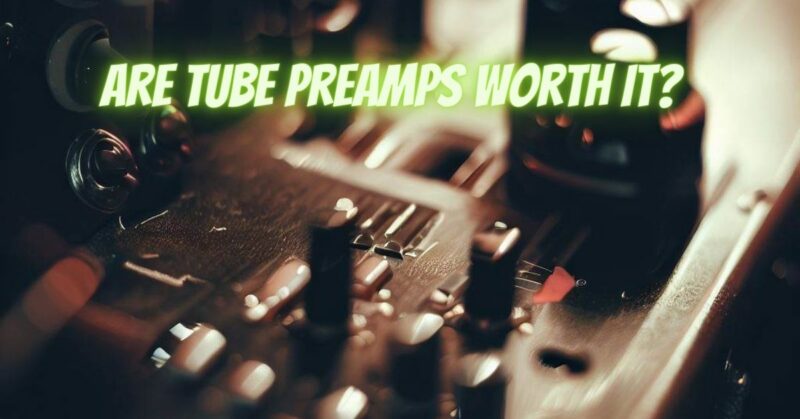Tube preamps have been a staple in the audio industry for decades, known for their warm and rich sound. However, with the advancements in solid-state technology and digital processing, some may wonder if tube preamps are still relevant and worth the investment. In this article, we will explore the benefits of tube preamps, as well as the considerations to help you determine if they are worth it for your specific audio needs.
Benefits of Tube Preamps:
- Warm and Harmonic Sound:
One of the primary reasons audio enthusiasts and professionals opt for tube preamps is the unique and musical sound they impart. Tube preamps introduce pleasant harmonic distortion, particularly even-order harmonics, which adds warmth and character to the audio signal. This warmth is especially desirable in recording and mastering applications, where a natural and pleasing tone is sought after.
- Dynamic Response:
Tube preamps respond to audio signals in a dynamic and expressive manner. As the input signal levels increase, tubes gently compress the sound, resulting in a smoother and more natural compression compared to solid-state preamps. This dynamic response can bring life and depth to the audio, making it particularly suitable for capturing vocals and acoustic instruments.
- Soft Clipping and Saturation:
Tube preamps exhibit soft clipping and saturation when the audio signal reaches their maximum capacity, producing a smooth and musical distortion. This soft saturation is less harsh and more forgiving to the ear compared to the hard clipping found in solid-state preamps. Musicians and producers often use tube preamps for adding character and color to their recordings.
- Vintage Appeal:
Tube preamps evoke a sense of nostalgia and vintage charm, appealing to those who appreciate classic audio gear. Many audio enthusiasts value the craftsmanship and heritage associated with tube-based equipment, making them collectible items in the world of audio.
Considerations:
- Cost:
Tube preamps are often more expensive than their solid-state counterparts due to the complexity of tube-based circuitry and the higher manufacturing costs. The higher cost may be a limiting factor for some, especially those on a tight budget.
- Maintenance:
Tube preamps require occasional maintenance, including tube replacement, to ensure optimal performance. Tubes have a limited lifespan and will need to be replaced periodically, adding to the overall cost of ownership.
- Heat and Power Consumption:
Tube preamps generate heat and consume more power than solid-state preamps. This higher power consumption may not be ideal for certain setups, especially in professional studios with multiple devices running simultaneously.
- Preference for Clean Sound:
Some audio engineers and musicians prefer a clean and transparent sound, which is characteristic of high-quality solid-state preamps. If you value transparency and minimal coloration, a tube preamp might not be the best choice for your audio setup.
Tube preamps offer a distinct and desirable sonic character, including warm and harmonic sound, dynamic response, and soft clipping. They are favored by audiophiles, recording engineers, and musicians for their vintage appeal and musical qualities. However, whether a tube preamp is worth it depends on your specific audio needs, budget, and preferences. If you seek a warm and colorful sound with vintage charm, a tube preamp can be a valuable addition to your audio setup. On the other hand, if you prioritize transparency and cost-effectiveness, solid-state preamps may be a more suitable choice. Ultimately, the decision comes down to personal taste and the desired sonic characteristics for your recordings and audio productions.

